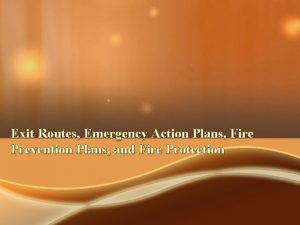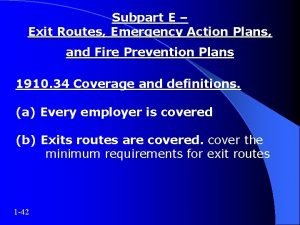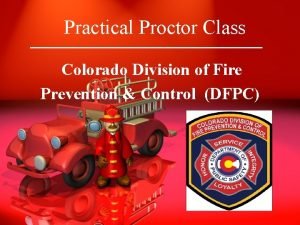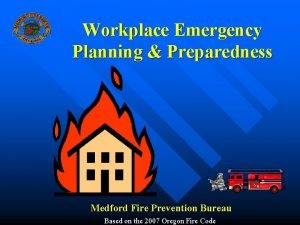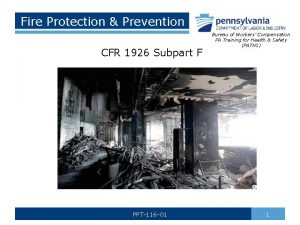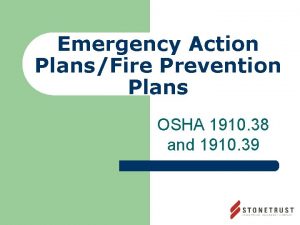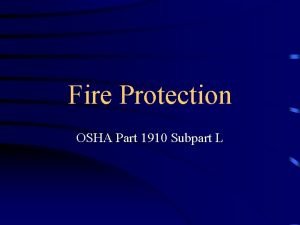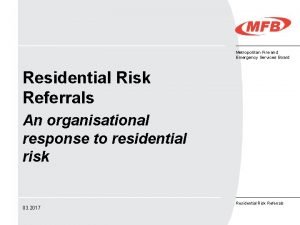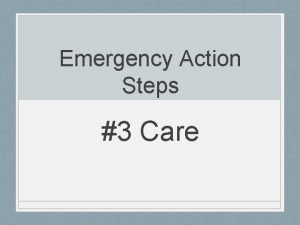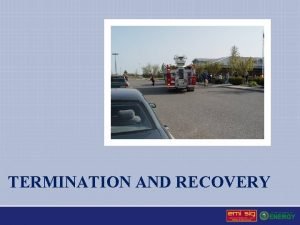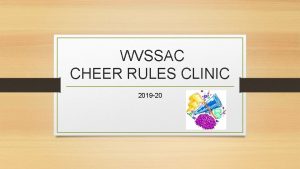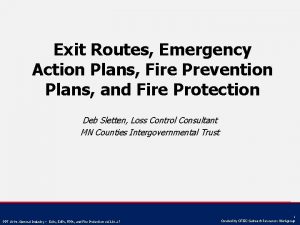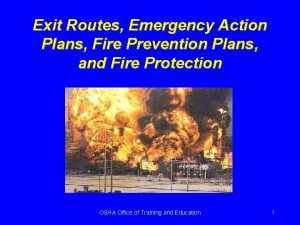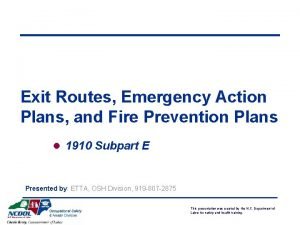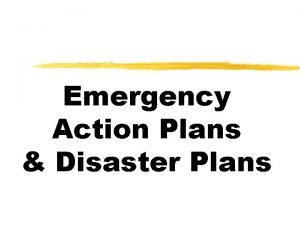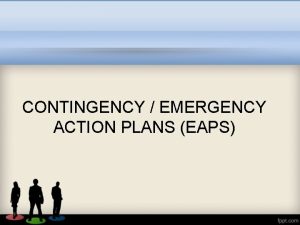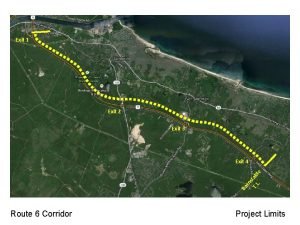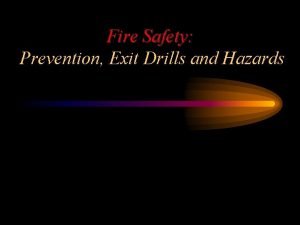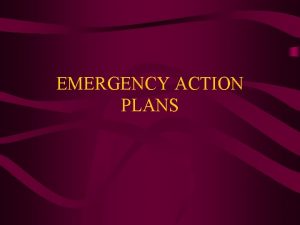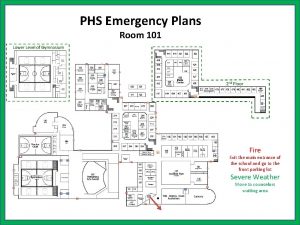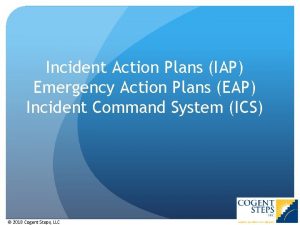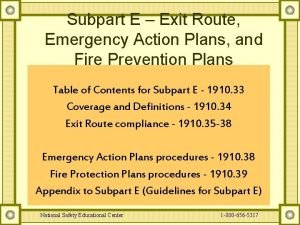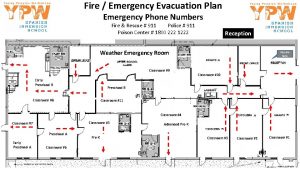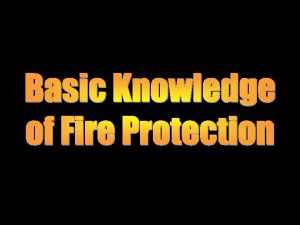Exit Routes Emergency Action Plans Fire Prevention Plans




















- Slides: 20

Exit Routes, Emergency Action Plans, Fire Prevention Plans, and Fire Protection

Introduction Fires and explosions kill more than 200 and injure more than 5, 000 workers each year There is a long and tragic history of workplace fires in this country caused by problems with fire exits and extinguishing systems OSHA requires employers to provide proper exits, fire fighting equipment, and employee training to prevent fire deaths and injuries in the workplace

Exit Routes-definition An exit route is a continuous and unobstructed path of exit travel from any point within a workplace to a place of safety (including refuge areas). Consists of three parts: Exit access Exit discharge

Exit Routes- basic requirements • Exit routes must be permanent and there must be enough exits in the proper arrangement for quick escape • Exits must be separated by fire-resistant materials • Openings into an exit must be limited to those necessary to allow access to the exit or to the exit discharge • An opening into an exit must be protected by an approved self-closing fire door that remains closed or automatically closes in an emergency

Exit Discharge Each exit discharge must lead directly outside or to a street, walkway, refuge area, public way, or open space with access to the outside that is large enough to accommodate all building occupants likely to use the exit route Exit stairs that continue beyond the level on which the exit discharge is located must be interrupted on that level by doors, partitions, or other effective means that clearly indicate the direction of travel to the exit discharge

Exit Doors Must Be Unlocked Locked and blocked exit Must be able to open from the inside at all times without keys, tools, or special knowledge Device such as a panic bar that locks only from the outside is permitted Must be free of any device or alarm that could restrict emergency use if the device or alarm fails May be locked from the inside only in mental, penal, or correctional facilities where there is constant supervision

Side-Hinged Exit Door • Must be used to connect any room to an exit route • A door that connects any room to an exit route must swing out in the direction of exit travel if the room is designed to be occupied by more than 50 people or contains high hazard contents

Exit Route Capacity and Dimensions • Must support the maximum permitted occupant load for each floor served • Capacity must not decrease in the direction of exit route travel to the exit discharge • Ceiling must be at least 7 -½ ft. high with no projection reaching a point less than 6 ft. -8 in. from floor • An exit access must be at least 28 in. wide at all points

Minimize Danger to Employees Obstructed exit route • Exit routes must be free and unobstructed • Keep exit routes free of explosive or highly flammable materials • Arrange exit routes so that employees will not have to travel toward a high hazard area, unless it is effectively shielded • Emergency safeguards (e. g. , sprinkler systems, alarm systems, fire doors, exit lighting) must be in proper working order at all times

Exit Marking • Each exit must be clearly visible and marked with an “Exit” sign • Each exit route door must be free of decorations or signs that obscure the visibility of the door

Exit Marking The plan must include: If the direction of travel to the exit or exit discharge is not immediately apparent, signs must be posted along the exit access indicating direction to the nearest exit The line-of-sight to an exit sign must clearly be visible at all times

Exit Marking Each doorway or passage along an exit access that could be mistaken for an exit must be marked “Not an Exit” or similar designation, or be identified by a sign indicating its actual use (e. g. , closet).

Emergency Action Plan • Describes actions that must be taken to ensure employee safety in emergencies • Includes floor plans or maps which show emergency escape routes • Tells employees what actions to take in emergency situations • Covers reasonably expected emergencies, such as fires, explosions, toxic chemical releases, hurricanes, tornadoes, blizzards, and floods

Fire Prevention Plan The plan must include: • A list of the major fire hazards and handling, storage, and control procedures • Names or job titles of persons responsible for maintenance of equipment and systems to prevent or control ignitions or fires • Names or job titles of persons responsible for control of fuel source hazards • Training for all employees who have responsibilities in the plan

Portable Fire Extinguishers If portable fire extinguishers are provided for employee use, the employer must mount, locate and identify them so workers can access them without subjecting themselves to possible injury. Locate the nearest fire extinguisher to your office or work area and visually inspect it once a month for the following: 1. Safety Pin is installed 2. Pressure gauge needle is in the green 3. Hose is attached and free of obstruction Blocked extinguisher

Extinguisher Classification & Markings Letters A B C D Class A ordinary combustibles wood, cloth, paper Class B – flammable liquids, gases, greases Class C – energized electrical equipment Class D – combustible metals Markings

How to use a Fire Extinguisher? PASS Pull the safety pin at the top of the extinguisher, breaking the plastic or thin seal in the process. Aim the nozzle or horn at the base of the fire. Squeeze the carrying handle and the discharge handle together to start the flow of agent. Sweep the nozzle back and forth. Move forward while sweeping the nozzle from side to side. Cover the fire until it is completely extinguished.

Maintaining Portable Fire Extinguishers Maintain in a fully charged and operable condition Keep in designated places at all times except during use Conduct monthly inspection check as well as an annual maintenance check Record annual maintenance date Retain record for one year after the last entry or the life of the shell, whichever is less.

Summary There must be enough exits in the proper arrangement for quick escape. Exit routes must be marked, lighted, free of obstructions with unlocked doors. An emergency action plan and fire prevention plan must be in place. Fire extinguishers must be inspected and maintained. Employees must be trained in how to use them.

QUIZ Click on the link below to take a 5 -Question Quiz. https: //secure. rutherfordcountytn. gov/insquiz/fireext. aspx Click link, enter SSN with dashes, take quiz, click submit. Your training will be recorded. Questions or requests. Dan Goode, Safety Coordinator dgoode@rutherfordcountytn. gov, 615 -898 -7715
 1/3 diagonal rule egress
1/3 diagonal rule egress Exit exit access and exit discharge
Exit exit access and exit discharge Primary prevention secondary prevention tertiary prevention
Primary prevention secondary prevention tertiary prevention What requirements must exit routes meet?
What requirements must exit routes meet? Uttar pradesh fire prevention & fire safety rules, 2005
Uttar pradesh fire prevention & fire safety rules, 2005 An ounce of prevention emergency
An ounce of prevention emergency Colorado jprs
Colorado jprs Medford fire prevention
Medford fire prevention Building fire protection ppt
Building fire protection ppt 29cfr1910 39
29cfr1910 39 1910 fire extinguisher
1910 fire extinguisher San francisco fire prevention
San francisco fire prevention Metropolitan fire and emergency services board
Metropolitan fire and emergency services board What are the 3 basic emergency action steps
What are the 3 basic emergency action steps What are the three emergency action steps
What are the three emergency action steps Dr abcde first aid
Dr abcde first aid Drowning emergency action plan
Drowning emergency action plan Emergency action termination
Emergency action termination Wvssac eligibility rules
Wvssac eligibility rules What are the emergency action steps
What are the emergency action steps Reichstag fire who was the fire starter
Reichstag fire who was the fire starter

